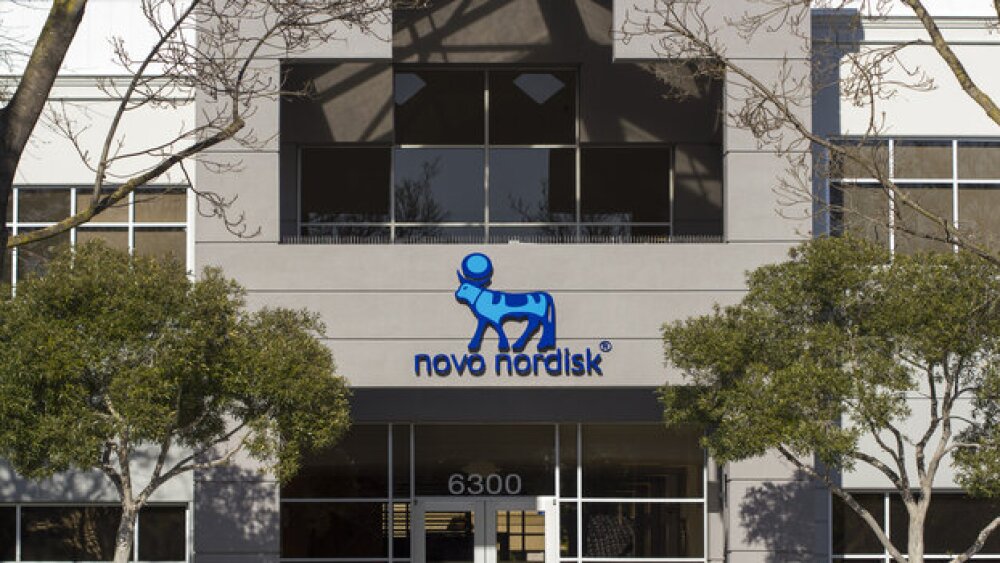It has been a topsy-turvy year marked by record bankruptcies, a sharp drop in funding, few IPOs, and a steady stream of layoffs and regulatory challenges offset by M&A deals and the hot weight loss and antibody-drug conjugate markets.
Pictured: Illustration of professionals interacting and data climbing/iStock, TarikVision
I’d like to say that the biopharma industry is ending 2023 on a different note than when we started the year. However, the more things changed, the more they stayed the same—if you know what I mean.
This year has seen a record number of biotech bankruptcies. It’s not surprising given that funding fell sharply in 2023. Overall, the biopharma industry is projected to raise $24 billion this year, a steep decline from the “high-water marks” of 2020 through 2022, when annual values reached $38.1 billion, $53.9 billion and $36.9 billion, according to market data firm PitchBook.
Exit activity was likewise slow this year—PitchBook projected only 84 deals totaling $17.9 billion—with much of the decrease in 2023 due to initial public offerings. We also saw continued evidence of a biosimilar onslaught amid the industry’s steep patent cliff, in which several drugs will lose exclusivity by the end of 2023.
In this business environment, companies are rethinking their market strategies and trying to cut costs, with some reducing investments in R&D and others culling their product pipelines. Layoffs continue across the sector—hardly a day goes by without another company announcing a layoff.
A major workforce reduction in 2023 came from Biogen, which cut 1,000 jobs—about 11% of its employees—as part of a $1 billion “Fit for Growth” cost savings program announced in July. Then in October, just weeks after completing its $7.3 billion Reata Pharmaceuticals acquisition, Biogen eliminated 113 positions at Reata’s Plano, Texas site.
In November, on the heels of cutting 100 jobs in Ireland, Pfizer said it was laying off around 500 workers from a U.K. facility under a $3.5 billion cost reduction plan. The company overestimated its pandemic-related product sales and was hit with a bigger COVID-19 cliff than anticipated. Pfizer’s full-year 2024 guidance released this month suggests that revenue next year could fall or come in flat compared to 2023. As a result, Pfizer is planning an “incremental” $500 million cost realignment to deliver a total savings of $4 billion by the end of 2024.
On the M&A front where deals bounced back in 2023, Pfizer’s $43 billion acquisition of antibody-drug conjugate (ADC) company Seagen was a standout. The buy announced in March 2023 cleared all regulatory approvals last week and closed on Dec. 14. AbbVie’s $10.1 billion ImmunoGen buy in late November showed that the ADC market remains red hot in oncology. Next year will see similar levels of M&A activity with increased investor interest in 2024 in weight loss and cardiovascular diseases, according to professional services firm PwC.
Speaking of weight loss, the GLP-1 rocket ride continued in the closing months of 2023. Novo Nordisk’s obesity drug Wegovy and Eli Lilly’s type 2 diabetes drug Mounjaro—used off-label for weight loss—drove blockbuster sales in the third quarter. The FDA’s approval in November of Lilly’s obesity drug Zepbound —which has the same active ingredient as Mounjaro—intensified an already heated battle with Novo’s Wegovy in the lucrative weight-loss drug market, as next-generation drugs for weight management are rapidly approaching.
An area in 2023 that also saw significant change during the year was how pharmaceutical companies approached the Inflation Reduction Act’s Drug Price Negotiation Program. Initially, Big Pharma publicly opposed the IRA’s price negotiations provisions—calling the law unconstitutional and filing lawsuits against the Biden administration—with some executives even suggesting that companies may choose to opt out of Medicare coverage for their drugs to avoid having to negotiate pricing. In the end, however, drugmakers capitulated and reluctantly came to the bargaining table.
The makers of the first 10 drugs selected for Medicare price talks participated in negotiations that began in 2023. By September 1, 2024, the Centers for Medicare and Medicaid Services will publish the maximum fair prices that have been negotiated for this first group of selected drugs, which take effect in 2026. There are also other ominous regulatory storm clouds on the horizon as we approach the 2024 presidential election.
It has been a topsy-turvy year for sure. I, for one, am glad it’s over. So long 2023! I’m hoping the new year will usher in an improved business environment. However, I have a feeling we’ll be seeing the biopharma industry confronting some of the same challenges in 2024.
Greg Slabodkin is the News Editor at BioSpace. You can reach him at greg.slabodkin@biospace.com. Follow him on LinkedIn.






